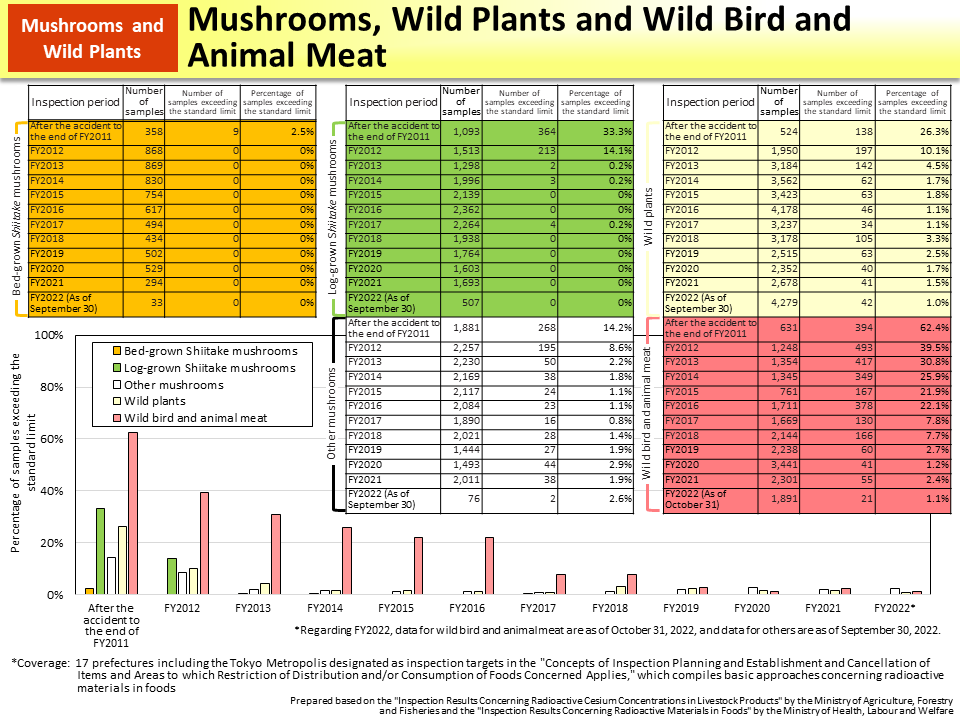Mushrooms, Wild Plants and Wild Bird and Animal Meat
Regarding mushrooms, for which cultivation management is possible, thanks to efforts for securing safe logs and the introduction of makeshift greenhouses, etc., radioactive contamination has been reduced through the use of production materials in conformity to the standards. The percentage of mushrooms with radioactive concentrations exceeding the standard limit is decreasing. This standard limit refers to 100 Bq/kg, which has been applied since April 2012 (in FY2011, provisional regulation values were applied, but tabulation is based on the current standard for the purpose of comparison with the results in and after 2012).
- Provisional safety standards regarding radioactive cesium for mushroom logs, bed logs, culture media for beds and mushroom beds
Mushroom logs and bed logs: 50 Bq/kg
Culture media for beds and mushroom beds: 200 Bq/kg
Radioactive concentrations exceeding the standard limit are still detected in some wild mushrooms and wild plants, for which cultivation management is difficult. Therefore, their shipment is thoroughly controlled continuously.
Wild bird and animal meat, such as boar meat and deer meat, still show radioactive concentrations exceeding the standard limit, although the number of such cases is on a decline. Feeding management like that for livestock animals is difficult for wild birds and animals that move around freely. Therefore, shipment of wild bird and animal meat is restricted by each prefecture in principle, and in some cases, only meat managed based on shipment and inspection policies formulated independently by respective local governments is permitted to be shipped out.
- Included in this reference material on February 28, 2018
- Updated on March 31, 2023

